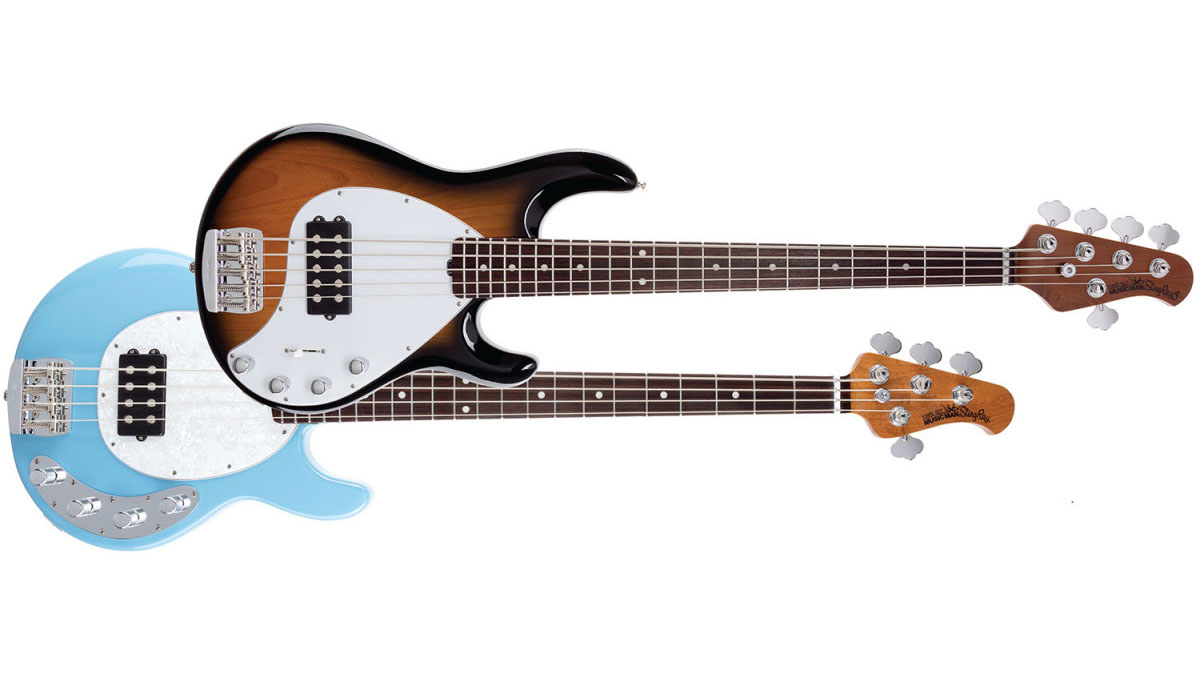Guitar World Verdict
All you’d want from a Sting-Ray, but better.
Pros
- +
Light weight; excellent construction; seminal sound
Cons
- -
None!
You can trust Guitar World
To start, let me get in front of what you may be thinking: Oh, great, another review of a bass you’ve already written about a bajillion times. Yes, it’s true, I’ve reviewed an abundance of StingRays, Bongos, and other Music Man basses over the years.
So, it’s my intention to justify this review without equivocation: The totally refreshed StingRays may look like their iconic predecessors, but under the hood, they’re almost entirely different instruments.
The design formula and distinctive tone remain, but Ernie Ball has fairly comprehensively updated, upgraded, and modernized many aspects of the instruments. See? I bet you’re interested now!
For newbies, the StingRay is one of a small handful of basses that would inarguably be on our instrument’s Mt. Rushmore. Considering its heritage, that shouldn’t be surprising.
A decade after selling Fender to CBS in 1965, Leo Fender, the father of bass guitar to whom we owe all things, had a major hand in designing the Music Man StingRay: Along with Tom Walker and Sterling Ball, he created an instrument no less innovative than his Precision and Jazz Bass designs decades prior.
Released in 1976, the StingRay offered features that had never before been seen on a production instrument, most notably an active 9-volt battery-powered preamp with EQ. It also boasted a monstrous single humbucking pickup near the bridge, a quick satin-finished neck, hardware that was beefy for the time, a 3+1 headstock, and a love-it-or-hate-it pickguard occasionally referred to as the 'toilet seat'.
Since its introduction, it’s been an essential part of the sound of many bass superstars, from Louis Johnson to Pino Palladino to Flea.
Over the years, the Music Man StingRay has continually evolved, but many of these changes have been relatively subtle. The redesigned Sting-Rays’ new features are anything but.
There’s a new preamp onboard, with an 18-volt 3-band system that offers boost and cut (rather than boost only) and a much longer battery life than previous designs. The famous “MM” pickup now features neodymium magnets and new pole spacing to more accurately align with the strings’ positions.
The famous P-Bass-inspired body now features a more sculpted and ergonomic five-bolt joint and a more deeply rounded arm contour for comfort. A popular option over recent years is now a standard feature: a roasted-maple neck.
While there isn’t much by way of scientific studies into roasted necks, the consensus is that they’re more resistant to weather-induced movement, thanks to their low moisture content. They also take to finishes well, which is why Ernie Ball is able to use a simple oil-and-wax neck finish to good effect.
Finally, the new Sting-Ray hardware has been substantially revamped to improve weight. The tuners are lighter designs, and the bridge is aluminum with the saddles bored out in the center to eliminate unnecessary heft. The resulting changes make new StingRays about 1.5 pounds lighter than their predecessors.
Stinging sound
As referenced above, I’ve played many a Sting-Ray in my time. A ’Ray was my first good bass, and I currently cherish my mid-’90s model and covet my buddy’s ’78. So, I was anxious to see if any of the new changes diminished what I’ve come to know as the StingRay’s inherent sound.
The StingRay has one of the most easily identifiable tones in bassdom: Even in comparison to Pand J-Basses, which can sneakily sound like each other in the right hands, the StingRay sounds like nothing else. Some amalgam of its unique bridge-focused humbucker, the proprietary preamp, the body and neck woods, and its always-beefy hardware combine to produce a tone that’s tough to cop elsewhere.
The sound is aggressive, with a high and upper-midrange frequency response that sizzles and snaps. The lower mids are perhaps a bit shyer than the pickup’s placement may suggest, and the bass response is present and balanced.
The StingRay conveys immediacy via its quick transient response, with a slightly scooped zing that makes it the definitive exemplar of a certain style of authoritative slap-bass tone.
Given all the above, I am pleased to report that the new StingRays are every bit the bass they’ve always been, just lighter, more comfortable, and with better battery life. Both test models had all the aggro presence and thwack I expected.
Plus, although the new hardware upgrades are designed for lighter weight, nothing felt insubstantial—good news, considering high-quality hardware and assembly have long been among Ernie Ball Music Man’s strengths.
Anyone looking for the distinctive StingRay sound with up-to-the-minute modern upgrades should look no further. Even those afraid of the single-pickup models’ one-trick-pony reputation can take heart: both the 4- and 5-string are available in two-pickup “HH” configurations.
Specifications
Street 4-string starting at $2,000, 5-string starting at $2,100
Construction Bolt-on
Body Ash
Neck Roasted maple
Fingerboard Rosewood (as tested)
Frets 21 high-profile, wide
Nut Compensated plastic
Bridge Aluminum w/lightweight nickel-plated steel saddles
Tuners Schaller BM, tapered string posts
Scale length 34"
Pickups Humbucking w/neodymium magnets
Controls Volume, bass, midrange, treble
Preamp 18-volt Music Man
Weight Approx 8.5 lbs
Made in U.S.A.
“Affordable versions of the three best basses I've ever held in my hands”: Sterling by Music Man completes its trilogy of Joe Dart signature models with a trio of made-to-order basses that cost less than $500
“The ace up the sleeve of bass players around the globe since 1978”: Tobias instruments were trailblazers in the bass world. Now they’re back as part of the Gibson family











